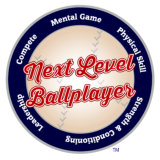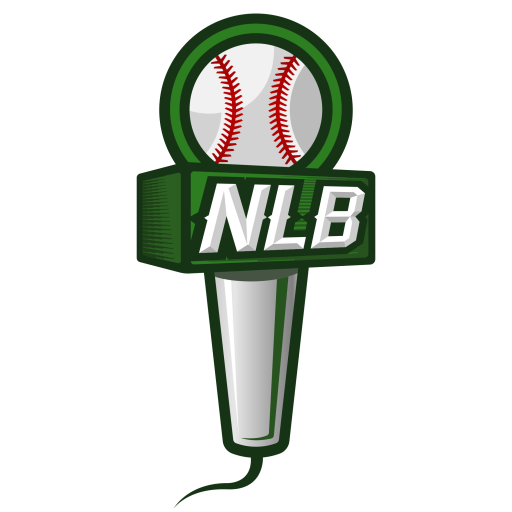ALSO – pitchers need to stop running poles. Jogging ruined my arm, my mentality, and made me slow and weak. Pitchers are power athletes and need to train as such.
I hate poles.
My pitching career began at the age of 14, when an MLB Scouting Bureau scout saw me at our provincial championships and got me hooked up with Team Ontario’s Development League. It was at that point when my relationship with “poles” began.
Pitching coaches–and baseball coaches in general–force their pitchers to run countless poles (which is simply running the warning track from foul pole to foul pole) in an attempt to improve strength, or endurance…to be honest, I am not sure what the actual benefit is that the coaches hope to achieve. Nevertheless, pitchers run. A lot.
Let’s look at running in general. Long, slow endurance work trains an athlete in the aerobic pathway. “Aerobic” simply means in the presence of oxygen. When we do things like jog, go for a bike ride, or even a long walk, our muscles use oxygen as the primary source of energy. By training within this energy pathway, the athlete should become more efficient in activities that require oxygen as the primary fuel. Unfortunately, training aerobically reduces muscle mass, power, strength, and speed, and dramatically reduces anaerobic capacity.
Is pitching aerobic in nature? Typically, the aerobic pathway becomes the primary metabolic engine after several minutes, and lasts for as long as needed (from hours, to days even). It is low-power, long-duration in nature. A pitch thrown from the wind-up takes less than 4-5 seconds to deliver. We consider a high-power, short-duration movement like this to be “anaerobic”, meaning without oxygen. The anaerobic pathway uses things like glycogen (think “sugar”) instead of oxygen as fuel. Training anaerobically has all of the cardiovascular/respiratory benefits without the muscle wasting of long, slow endurance work. (On a side note, “cardiovascular” = heart and blood vessels, while “respiratory” = lungs. These two systems work together to bring oxygen from the air into your working muscles). Anaerobic training increases muscle mass, strength, speed, and power; in fact, anaerobic training is better than aerobic training at improving aerobic capacity (crazy, huh?).
Based on energy systems alone, along with the physiological adaptations (or changes) from training in those systems, a pitcher has no reason to subject themselves to long, slow running. Pitchers are power athletes, and need to be treated as such. Throwing a baseball with max velocity is an explosive movement, and the body of a pitcher needs to be strong and powerful to handle the stress of repeated bouts of high-power, short duration activity. And if you don’t believe me, this picture should be convincing:
Even for the few of you reading this that are aware of the anaerobic nature of pitching, but still task your pitchers to run poles following an outing in an attempt to flush lactic acid, are missing an important piece. Any lactic acid accumulation will be filtered out within several hours without having to run. Unless the pitcher is going to throw again later that day, trying to increase blood flow through running is not necessary. Besides, the “soreness” one feels following a pitching outing is not due to lactic acid, but to DOMS (delayed onset muscle soreness) from the microscopic trauma and subsequent swelling pitching can cause on the muscles of the shoulder, arm, and back.
Icing is cool. Poles? Not cool.
Training Ideas
Pitchers need anaerobic capacity to produce high power, but still have the ability to survive, and thrive, during a long outing. Here’s a few ideas to stay strong, fast, and powerful:
1. Sprints – A pitch lasts 3-5 seconds (really, the wind-up is most of that…the actual “pitch” lasts well under one second). The rest cycle is roughly 3-4x that duration (on average). Have your pitching staff run 30 to 40 yard max effort sprints, followed by 20 seconds of rest. Repeat this 10-15 times. Allow your pitchers to rest 5 minutes, and repeat. Not only will this simulate going from inning to inning, but the challenging nature of anaerobic efforts will improve mental fortitude. We’ll look at the mental-side of training for a pitcher in the next installment.
2. Olympic Lifting – The most powerful movements in sports, without question, are the Clean and Jerk, and the Snatch. Done properly, including these movements–and their variations–in your strength & conditioning program will provide tremendous speed and power development. These lifts also mimic the explosive nature of pitching in that they last only a few seconds, and have a flow of movement from core to extremity.
3. Sled Sprints – Dragging or pushing heavy loads while sprinting have immense benefit for power athletes. They also lack eccentric loading, dramatically decreasing the likelihood of soreness. Sled work is excellent for developing explosive strength, and should be used several times a week. Try 8-10 sprints at 40-60 yards using a fairly heavy weight (something you can generate some decent speed on, without the need to stop or walk). You can even mix in backwards sprints, lateral shuffles, and heavy walks.
4. Throw away the rehab drills – The 5 lbs. rubber tubing drills are great for rehabilitation, but we can sprint and lift weights as prehabilitation instead. I am not saying the classic “Jobe” exercises are not beneficial at helping to strengthen a weak or injured shoulder, but considering pitchers can generate up to 3 HP (horespower) on a 90mph pitch, the rubber band just isn’t going to cut it. We’ll look at off-season training protocols in a later installment, but for now, let’s get our throwers utilizing movements that have the ability to increase power (or by CrossFit‘s definition, the ability to move a large load, a long distance, quickly). Examples here include heavy squats, deadlifts, pullups/chinups, dips, and presses.
Please leave your questions and thoughts in the comment section below. If you would like to contact Justin directly, you can email him at JustinFarina@gmail.com.




